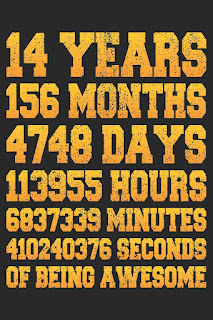The Kira Institute presents SL avatar MetaverseOne Inventor
 The Kira Institute, a nonprofit organization in Second Life, focuses on combining the elements of universality and personal involvement. Kira is exploring the use of virtual worlds to develop new forms of research and education, rooted in scientific and scholarly traditions but unconfined by the usual disciplinary and academic boundaries or by geographical limitations. Virtual worlds are media where professionals, amateurs, teachers, and students, from all over the globe, can engage in open dialog. In this setting, Kira facilitates peer based collaborations in fields as diverse as science, art, philosophy, and other ways of knowing.
The Kira Institute, a nonprofit organization in Second Life, focuses on combining the elements of universality and personal involvement. Kira is exploring the use of virtual worlds to develop new forms of research and education, rooted in scientific and scholarly traditions but unconfined by the usual disciplinary and academic boundaries or by geographical limitations. Virtual worlds are media where professionals, amateurs, teachers, and students, from all over the globe, can engage in open dialog. In this setting, Kira facilitates peer based collaborations in fields as diverse as science, art, philosophy, and other ways of knowing. As their website describes it, science is basically universal in the way it is practiced, largely independent of nationality or personal belief system, where personal involvement is specifically discouraged. Systems aimed at developing and guiding personal aspirations, from religions to ideologies to humanistic programs, do encourage involvement, but at the cost of universality. Kira promotes the idea that a synthesis between involvement and universality holds the key for developing a framework within which to confront the problems facing our society in the 21st century.
As their website describes it, science is basically universal in the way it is practiced, largely independent of nationality or personal belief system, where personal involvement is specifically discouraged. Systems aimed at developing and guiding personal aspirations, from religions to ideologies to humanistic programs, do encourage involvement, but at the cost of universality. Kira promotes the idea that a synthesis between involvement and universality holds the key for developing a framework within which to confront the problems facing our society in the 21st century. Kira Institute (Kira Dome SLUrl) has a full calendar of events and gatherings including ReLaM, Relocatable Laboratories in the Metaverse. ReLaM is a weekly workshop offered jointly by the Kira Institute and the Meta Institute for Computational Astrophysics. This workshop is a talk forum to learn about leading edge projects taking place in virtual worlds and provides an opportunity to hear about projects and research, ask questions and engage in a dialog with the project innovator. They truly have a great list of speakers on some amazing topics. Be sure to check out next week with Aaron Walsh from the Media Grid, someone very familiar with the open standards VRML and X3D (he is co-author of one of my favorite books, Core Web3D).
Kira Institute (Kira Dome SLUrl) has a full calendar of events and gatherings including ReLaM, Relocatable Laboratories in the Metaverse. ReLaM is a weekly workshop offered jointly by the Kira Institute and the Meta Institute for Computational Astrophysics. This workshop is a talk forum to learn about leading edge projects taking place in virtual worlds and provides an opportunity to hear about projects and research, ask questions and engage in a dialog with the project innovator. They truly have a great list of speakers on some amazing topics. Be sure to check out next week with Aaron Walsh from the Media Grid, someone very familiar with the open standards VRML and X3D (he is co-author of one of my favorite books, Core Web3D). ReLaM's original focus was on interoperable scientific labs and now encompasses many forms of interoperability, new technologies and best practices in virtual worlds. ReLaM later expanded its focus to include the work of many disciplines that are contributing vital "laboratories" of work within the metaverse. It has grown over time into a community that reaches across disciplines to establish a shared knowledge among scholars seeking to understand different types of emerging technologies associated with:
ReLaM's original focus was on interoperable scientific labs and now encompasses many forms of interoperability, new technologies and best practices in virtual worlds. ReLaM later expanded its focus to include the work of many disciplines that are contributing vital "laboratories" of work within the metaverse. It has grown over time into a community that reaches across disciplines to establish a shared knowledge among scholars seeking to understand different types of emerging technologies associated with: - conducting science research in virtual worlds;
- operating among virtual worlds;
- best practices in virtual worlds.
 I was asked to present on 3D Web open standards for the Metaverse at the Kira Dome and felt quite honored to do so. I was more than happy to reach out to such a tech savvy audience. I tried not to spend too much time on the presentation as I really wanted a chance to get to more back and forth dialogue with the audience.
I was asked to present on 3D Web open standards for the Metaverse at the Kira Dome and felt quite honored to do so. I was more than happy to reach out to such a tech savvy audience. I tried not to spend too much time on the presentation as I really wanted a chance to get to more back and forth dialogue with the audience.I touched into augmented reality, mirrored worlds, web3D applications, open standard virtual worlds (Vivaty, Exit Reality), and how I would like to see more support from the SL community for the current 3D web standards. I thank Saki Bailey for the opportunity to dust off my Second Life shoes and share the standard of the 3D web with those using web3D technologies for amazing things.


Comments